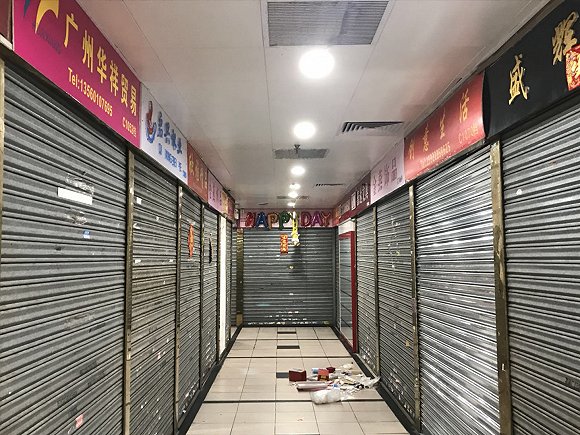Faced with an unprecedented crisis, toy factory owners are trying every possible strategy to keep their heads above water.

By WU Rong
For two months, Huang Xin has been in a state of constant anxiety.
In February, when China was in the depths of the COVID-19 epidemic, the toy factory owner fretted over his workers and shipping orders. Fast forward to April, and most parts of North America and Europe, where his customers are, are in lockdown. He now loses sleep over the scarcity of orders. Occasionally, small orders for jigsaw puzzles and educational toys trickle in, but they are few and far between.
Huang is not alone in his suffering. In Chenghai, the toy capital of China, toys and gifts worth about 50 billion yuan (US$ 7 billion ) are churned out by over six thousand factories each year. An entire ecosystem of toy business has emerged, employing over 120,000 people.
Almost three quarters of Chenghai’s production is exported. Every year since 1999, wholesalers and distributors have come from all over the world to the international trade show held there. Local factory owners travel to similar events in Hong Kong and New York: Every year until this year.
All events are postponed or canceled.
“It will take at least two months to get the virus under control overseas. Then, probably another two months to return to normal,” Huang said.
All businesses are all faced with the same paucity of orders, but not all businesses are equal to withstanding the shock.
Larger companies with substantial capital reserves might be able to hold on for months or even a year. Smaller businesses, like Huang’s, are more vulnerable. Huang’s factory produces toys for major US motion picture franchises, so despite a profit margin as high as 10 percent, his operation is only viable on a large scale due to high manufacturing costs. Now, the machines sit idle and all his workers are still on the payroll. Huang expects his factory to limp on for no more than a couple of months.
Across the economy, the epidemic hit businesses and industries with preexisting conditions hardest. Troubles were creeping into the local toy industry well before the shutdown. In particular, foreign companies have shifted their bases to Southeast Asia where labor costs are lower. For another, as China tightens environmental regulations and product safety standards, many factories, unable to adapt, have already closed for good.
The pandemic could well be the knockout blow to an already-reeling industry. In mid-March, a leading factory in Dongguan laid off 1,200 employees. Similar threats hang over everyone, and Chenghai companies have gone to great lengths to try to save themselves.
Some have tried to switch to production of masks and protective gear, but with neither the manufacturing know-how nor a well-established network of suppliers, very few, not even industry juggernauts like Alpha Animation, have succeeded.
Others, expecting China to be among the first to recover, hope to shift their focus to the domestic market. This turns out to be difficult as well. In the toy export business, after leaving the factory, products typically go through many layers of distributors and wholesalers in different countries before finally reaching the consumer. More or less, the manufacturers’ only participation in this process until now has been loading toys on to trucks at the factory gate.
To refocus on the domestic market, Chenghai would have to build a new domestic distribution network from scratch, or rely on social media and e-commerce to sell direct to the consumer. Both must happen fast and will take an enormous amount of money. Chenghai’s toy companies haven’t a great track record of being nimble in facing new challenges, so this could prove quite problematic.
Honton, a commercial event organizer, is connecting factories and distributors virtually. A virtual exhibition hall called “Xiaoniao [little bird] Cloud” enables factories to show their products directly to distributors through images and videos. More than 3000 factories and hundreds of distributors have signed up and over 100 million toys are on display.

The shock of the pandemic is being up and down the industrial chain.
Zhan Xiaoying is a wholesaler in Guangzhou’s Yide Road toy district, this year she is selling a particular Chenghai soft toy. The fist-sized soft toys have not taken off in China, and most of her customers come from overseas. Business has been dismal since reopening.
“No more than ten people a day visit my store each day. None of them are foreigners. They are all immediately sent to quarantine when they get off the plane!”
Her business is floundering. Over 30,000 yuan of rent and the landlord refuses to renegotiate. Utility bills are high. To save electricity, she keeps only a small lamp on, at the entrance to the store. She has sold only 600 yuan worth of toys since she restarted her business, a mere drop in her 2 million yuan ocean of inventory.
Zhan has no intention of moving online. “It looks more glamorous than it actually is,” she said. She and her fellow wholesalers have had their fair share of e-commerce horror. A platform reached out to them last year, promising all-inclusive support for online stores, but the sign-up fees and commissions didn’t transfer into sales and profits. The online stores did very poorly, and many sellers gave up.
In Zhan’s way of thinking, toy purchases, especially large purchases, still rely on in-person experiences in brick-and-mortar stores. Online stores incur marketing costs that are unsustainable to a small business like hers.
Zhan intends to talk to her landlord again, hoping that he will budge on the rent, given the large number of tenants who have moved away. If not, she will just dispose of her stock and shut down the store.
“Maybe I’ll rent in another market where the landlord is easier on new tenants.”
If worst comes to worst, Zhan is prepared to leave the toy business behind and get a job at a friend’s logistics company.